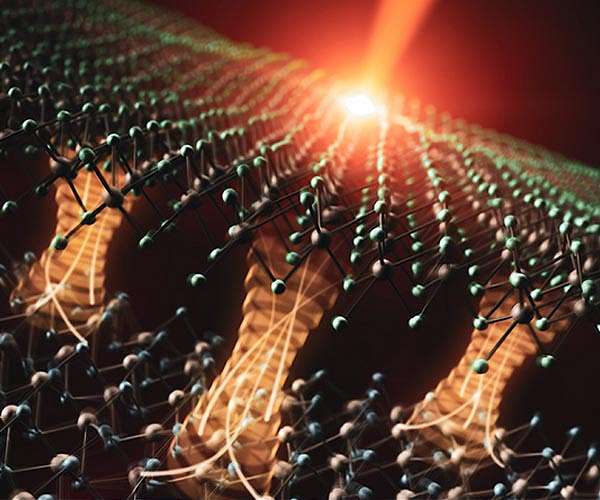
Direct observation of electron transfer in solids achieved
by Riko Seibo
Tokyo, Japan (SPX) Jun 05, 2024
Electron transfer (ET) is a process where an electron moves from one atom or molecule to another, fundamental to electrochemical reactions with applications across various fields. Nanoscale ET, involving electron transfer in the 1-100 nanometer range within solids, is crucial for designing multifunctional materials but remains not fully understood.
Nanotubes, with unique cylindrical nanostructures, exhibit diverse ET properties through electron and hole injections, making them ideal for studying nanoscale ET. However, carbon-based nanotubes present challenges in controlling shape and size due to extreme synthesis conditions.
A bottom-up fabrication approach for non-covalent nanotubes, sometimes resulting in crystalline forms, offers a solution. Non-covalent nanotubes, formed through attractive non-covalent interactions, are not durable enough to withstand electron and hole injections, which can break their structure.
Researchers from the Department of Applied Chemistry at Tokyo University of Science, led by Professor Junpei Yuasa and including Dr. Daiji Ogata, Mr. Shota Koide, and Mr. Hiroyuki Kishi, have developed a novel approach to directly observe solid-state ET. Prof. Yuasa stated, “We have developed crystalline nanotubes with a special double-walled structure.
By incorporating electron donor molecules into the pores of these crystalline nanotubes through a solid-state oxidation reaction, we succeeded in directly observing the electron transfer reaction in the solid using X-ray crystal structure analysis.” Their findings were published in the journal Nature Communications on May 23, 2024.
The team employed a novel supramolecular crystallization method, involving oxidation-based crystallization, to fabricate zinc-based double-walled crystalline nanotubes. This structure, with large windows in the nanotube walls, is robust and flexible enough to maintain its crystalline state during ET oxidation processes.
The nanotubes absorbed electron donor molecules, such as ferrocene and tetrathiafulvalene, through these windows, facilitating solid-state ET oxidation reactions and creating holes in the donors within the nanotube. The robustness of the crystals allowed direct observation of this ET oxidation process using X-ray crystal structure analysis, revealing key insights.
This approach is valuable for directly observing ET in solid nanomaterials. Prof. Yuasa emphasized, “Understanding ET can lead to the development of novel functional materials, which in turn can lead to the design of more efficient semiconductors, transistors, and other electronic devices. Optoelectronic devices, such as solar cells, rely heavily on ET. Hence, direct observation of ET can help improve these devices’ performance. Additionally, this approach can lead to advancements in energy storage, nanotechnology, and materials science research.”
This study exemplifies the direct observation of solid-state ET, potentially expanding to observe ET and related phenomena in other nanomaterials.
Research Report:Direct observation of electron transfer in solids through X-ray crystallography
Related Links
Tokyo University of Science
Understanding Time and Space
- SEO Powered Content & PR Distribution. Get Amplified Today.
- PlatoData.Network Vertical Generative Ai. Empower Yourself. Access Here.
- PlatoAiStream. Web3 Intelligence. Knowledge Amplified. Access Here.
- PlatoESG. Carbon, CleanTech, Energy, Environment, Solar, Waste Management. Access Here.
- PlatoHealth. Biotech and Clinical Trials Intelligence. Access Here.
- Source: https://www.spacedaily.com/reports/Direct_Observation_of_Electron_Transfer_in_Solids_Achieved_by_Tokyo_University_of_Science_Researchers_999.html



